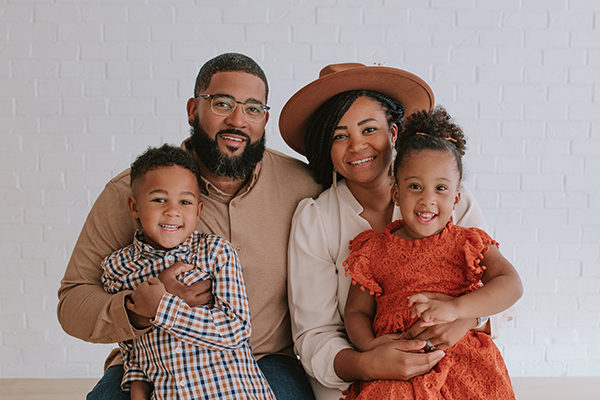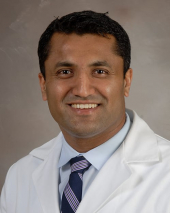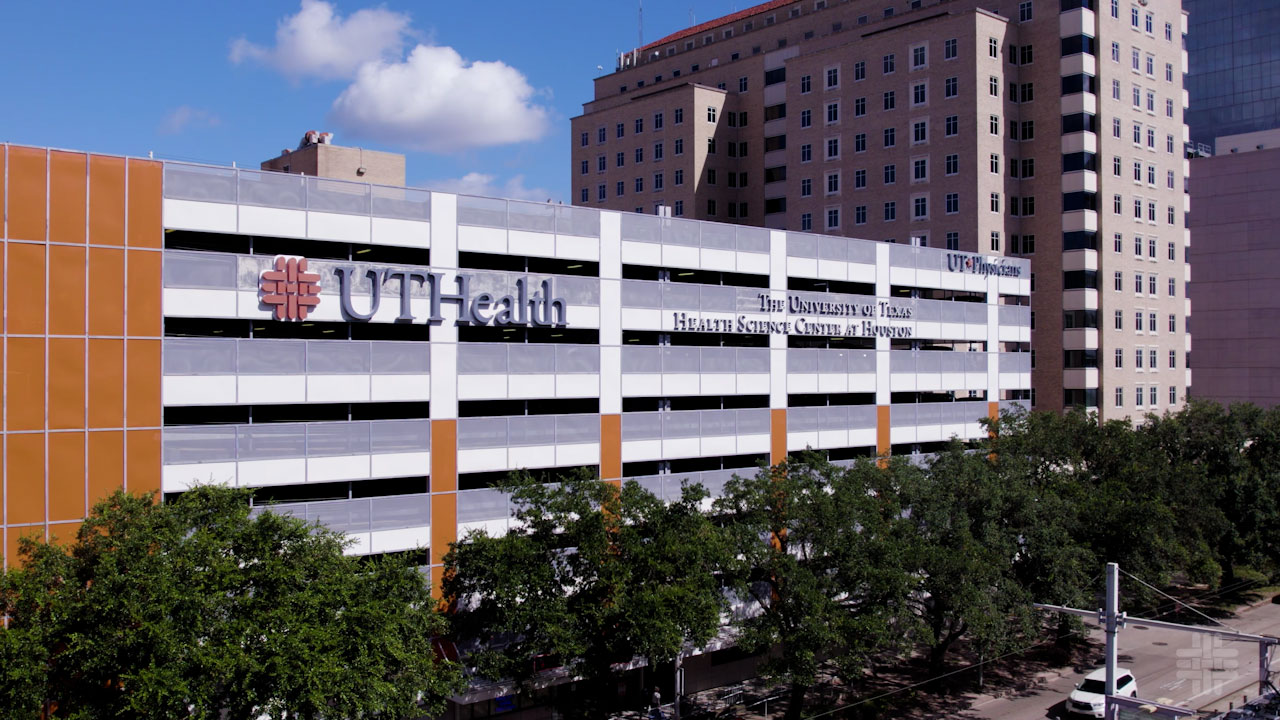At age 3, Luna Grayson loves to sing, count, flip through books, and watch toddler learning videos online. Her mother, Krystal Grayson, credits the videos with helping her daughter improve her enunciation. Luna, who walks independently, is among the 1 in 2,875 children born each year with spina bifida, the most common and severe form of which is myelomeningocele.
From shock to support
Krystal knew nothing about spina bifida when her daughter was diagnosed at her prenatal, 20-week anatomy scan.
“I didn’t want to go down the Google rabbit hole before I talked with a professional. We didn’t know the extent of her defect or where it was located. I wanted information from a specialist, and because I knew nothing about spina bifida, I wanted it quickly,” she said.
Her OB-GYN in Austin referred her to a local maternal-fetal medicine specialist who recommended a trip to Houston for expert examination and diagnosis. With the help of the specialist, she arranged an appointment at the UTHealth Houston Fetal Center with Ramesha Papanna, MD, MPH, professor and UTHealth Houston chair in fetal intervention; Kuojen Tsao, MD, professor and The Children’s Fund, Inc. Distinguished Professor in Pediatric Surgery; and Stephen A. Fletcher, DO, professor of pediatric neurosurgery. All three are faculty at McGovern Medical School at UTHealth Houston, and Papanna and Tsao are co-directors of the center. Because the physicians understood the urgency of an accurate diagnosis, they scheduled an appointment for Krystal and her husband, Jordan Grayson, the following day.
Journey to advanced care and innovative options
Krystal and her husband made the two-and-a-half-hour drive to Houston to meet with Papanna, Tsao, and Fletcher in July 2021.
“The doctors gave us a lot of clarity about our options,” Krystal said. “Spina bifida is a snowflake condition in the sense that it affects each baby differently. We left with more understanding about the challenges Luna would face as a toddler, those we would face as parents, and the steps we needed to take to ensure she could live her best life.”
Krystal was offered the traditional open repair procedure, and she and Luna also qualified for a fetoscopic clinical trial that was then underway at UTHealth Houston. The fetoscopic procedure differs from in utero repair, which requires a large incision on the uterus and delivery by cesarean section. Instead, the fetal intervention team repairs the spina bifida defect in two layers through three small incisions in the uterus using a fetoscope, a high-resolution camera, and tiny surgical tools. The first layer is closed using a cryopreserved human umbilical cord (HUC) patch placed over the spinal cord, followed by a second layer of primary closure of the skin. Mothers undergo vaginal delivery, unless there is an obstetrical indication for C-section.
Fetoscopic procedure for spina bifida
Krystal decided to undergo the fetoscopic procedure “to give my daughter the best possible quality of life” and returned to Houston for surgery the first week of August 2021. She was the 15th patient treated in the medical school’s trial of the NEOX patch, called “Early Feasibility Study for Fetoscopic Spina Bifida Repair,” which ended in June 2023 and continues in a five-year follow-up protocol.
During the procedure, Tsao opened the uterus, and Fletcher revealed Luna’s spinal cord and sewed the patch in place over the small defect on Luna’s spine. Following the surgery, Krystal stayed at her father’s home in Houston for two weeks, after which her follow-up care was transferred to her maternal-fetal medicine specialist in Austin, who reported the results of her weekly ultrasounds to Papanna.
A successful delivery
At 34 weeks, Krystal returned to Houston and checked into a hotel near the Texas Medical Center. When her water broke at the hotel, her sister took her to the hospital to check in. The emergency center team prepped her for an emergency C-section, which is standard procedure for pregnant women who have delivered previously by C-section. Papanna arrived and told her he believed she could deliver vaginally.
“That’s exactly what I wanted, as I had delivered my son by C-section and had just undergone the fetoscopic surgery two months earlier,” Krystal said. After a relatively short labor, Luna was born on Oct. 1, 2021.

Luna’s time in the NICU
“My husband arrived in Houston before Luna came, so he held her a bit before they put her in the warmer and took her to the NICU,” she said.
Krystal stayed in the hotel and took breast milk up to the neonatal intensive care unit at the hospital each day during Luna’s 29-day stay. Her husband and 4-year-old son drove from the Austin area on weekends.
“It wasn’t terrible to be there a month, but the hardest part was not being able to hold Luna,” she said.

“Krystal was able to go full term with no complications during pregnancy,” Papanna said. “Luna’s back looked normal, with no cerebrospinal fluid leakage. The skin had healed in the uterus, she had no hindbrain herniation (when lower portions of the brain are displaced due to increased pressure inside the skull), and her legs were moving.”
Embracing life with joy
Patients who participated in the trial return for checkups over five years.
“Luna is the beneficiary of all the research and patients who came before her,” Papanna says. “We work hard to ensure that each patient has access to the best health care. Krystal’s surgery was straightforward and uncomplicated. A diagnosis of spina bifida doesn’t necessarily indicate a bad outcome.”
“Luna can walk independently, although she still prefers to crawl – and she crawls very fast,” Krystal said. “She wore a Ponseti brace for two years, the standard of care to correct clubfoot. Her foot is fine now, and she wears an ankle-foot orthosis (an external medical device such as a brace or splint) to set her feet forward. She’s talking and has some enunciation problems but will get it in her own time. My first one was also slow to start. She loves to laugh. We’re blessed with a very happy child.”


